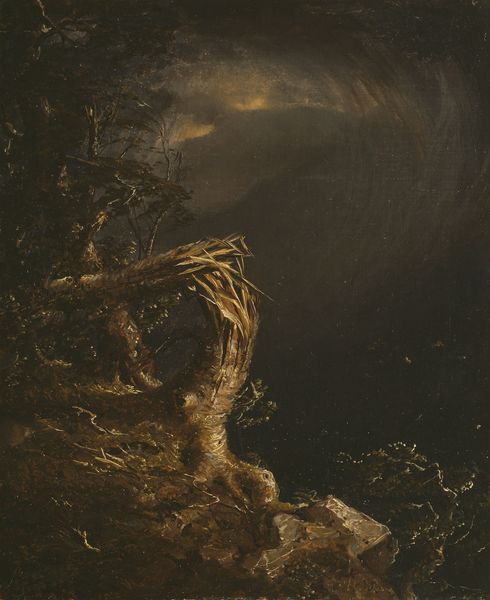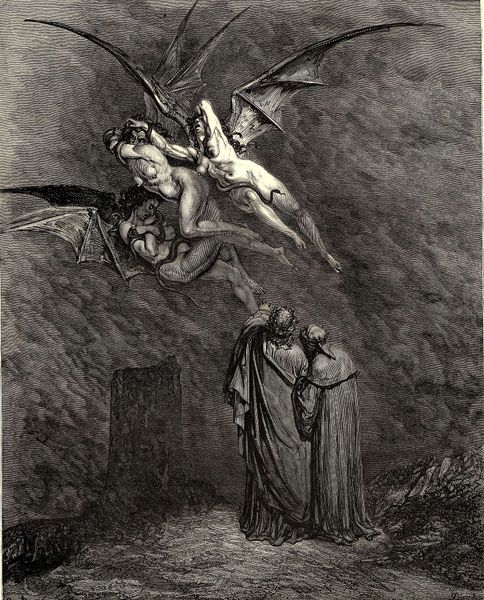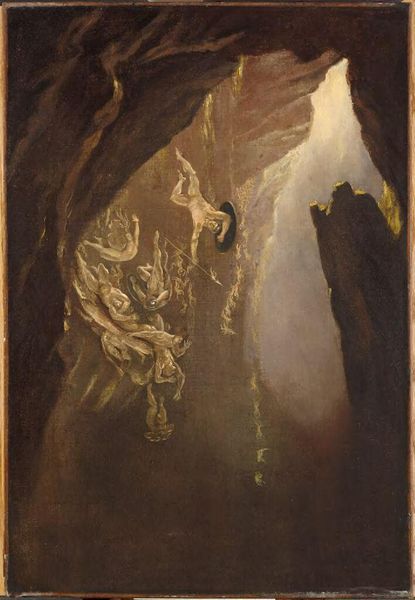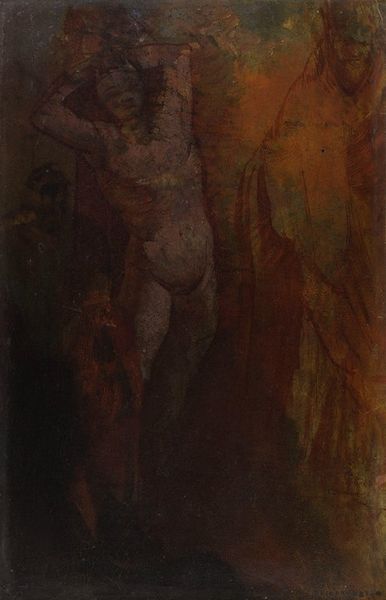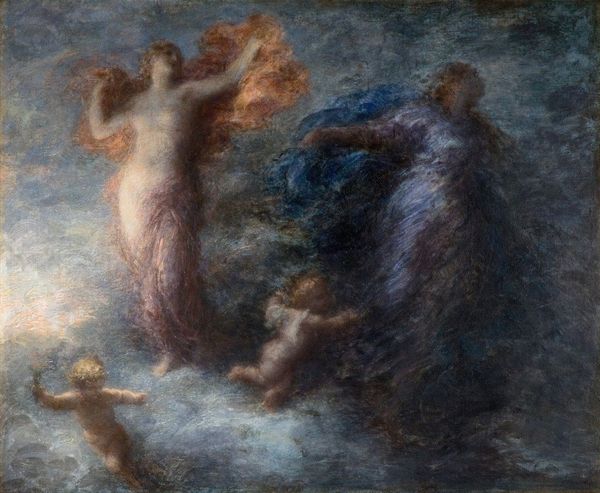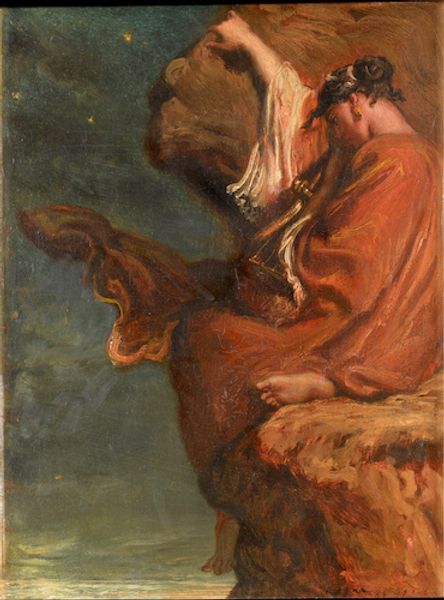
Dimensions: 52.5 x 35.5 cm
Copyright: Public domain
Curator: Here we have "The Three Rhine Maidens", painted in 1876 by Henri Fantin-Latour, an artist now best known for his still lifes. This piece resides here at the Musée d'Orsay, made with oil paint. It's a departure for him, isn't it? What catches your eye first? Editor: The overwhelming sense of…gold, maybe? It feels less like they're in the Rhine and more like swimming in liquid honey, with this gauzy light that threatens to swallow them whole. Kind of unsettling, really. Curator: That uneasy feeling is probably quite intentional. Fantin-Latour was deeply engaged with Wagner's operas, and these are the maidens from "Das Rheingold." The story is inherently about the corruption of innocence and the loss of something precious for worldly power. Editor: Aha! It does read like a fable of sorts. And that color... like they're already tainted somehow. Even the landscapes feel spectral. Not exactly a celebration of these women or the river. More like a warning, yeah? Curator: Precisely. Consider the visual vocabulary of Romanticism, tinged with the emergent aesthetics of Symbolism. We're far from straightforward portraiture here. Fantin-Latour isn’t depicting reality so much as conjuring a mood, using these mythological figures to hint at deeper anxieties around industrialization and the loss of natural purity. Editor: You said it! It does make one think about all that's been taken, bartered away for glitter and empty glory. Still, it’s a little confusing. The style has got all the drama of a classical painting, and that heavy oil seems at odds with the transparency that one may want for a depiction of, you know, spirits. Curator: I understand completely. And his approach, so rooted in the academic tradition of painting, also tries to capture a more ethereal, otherworldly quality through blending and glazing techniques that are pushed to almost hallucinatory ends. Editor: He’s conjuring! Kind of admirable actually. Well, I came to mock, but I am staying to… appreciate the underlying tension? Not bad at all! Curator: Indeed! Fantin-Latour encourages us to look beyond the beautiful surface and contemplate the costs lurking beneath. Editor: So next time I'm tempted by something shiny, I’ll remember these honey-soaked sirens. Maybe I will resist—or not, as these Rhine maidens were themselves not beyond reproach. Curator: And perhaps that's the final, stinging truth woven into this tapestry of dreams and warnings: that corruption resides even where we least expect it.
Comments
No comments
Be the first to comment and join the conversation on the ultimate creative platform.

